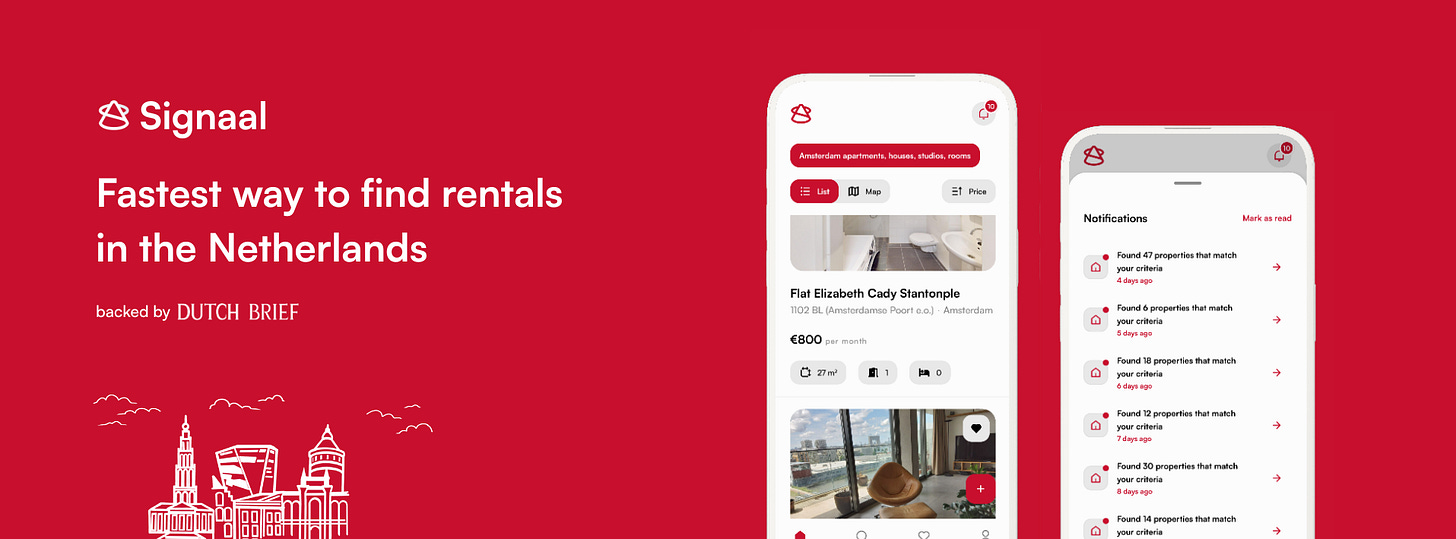All About Phone Plans & Home Internet in Groningen
Prepaid or SIM-only, eSIM options, MVNOs vs major networks, and how to set up fast, reliable home Wi-Fi without surprise fees.
Before we begin, a quick shoutout to our sponsor, Signaal:
Looking for housing in the Netherlands?
Signaal helps you skip the endless scrolling by tracking new listings from trusted platforms and alerting you when something matches your needs, all in one easy-to-use app.
Your first week in Groningen, prepaid is the least hassle: you can buy a SIM without a BSN or Dutch bank account and top up as you go, perfect while paperwork is in flight. Later, SIM-only (a contract without a handset) is usually cheaper per GB and unlocks bundle deals with home internet.
eSIM and Networks
KPN, VodafoneZiggo/Vodafone and Odido run the networks; brands like Simyo (on KPN) and hollandsnieuwe (on Vodafone) rent capacity and often undercut on price.
If you want two lines on one phone, look for eSIM: Simyo offers eSIM on KPN’s network so you can keep your home-country number alongside a Dutch one. Coverage and 5G performance are broadly strong across the Netherlands, including Groningen.
EU roaming is included but not limitless abroad. Providers apply a Fair Use cap; if you exceed it, any extra data can be surcharged up to €1.30/GB (ex-VAT) in 2025, falling in later years. Check each plan’s fair-use allowance before assuming domestic “unlimited” equals unlimited in Paris.
Why Bundles Matter
On like-for-like data, MVNOs are usually cheapest; majors win when you bundle mobile + home. Odido Klantvoordeel can double mobile data and discount both mobile and home internet; KPN Combivoordeel offers monthly mobile discounts (and other perks) when combined at the same address. If you plan to take KPN fibre or Odido home internet, check out their mobile brands first to capture the package savings.
Fibre Where you Can, Cable Where you Can’t
Citywide, Ziggo cable (DOCSIS) is available and gigabit-capable; fibre (FTTH) is expanding area by area via KPN Netwerk and partners. Don’t guess: run an address check. Different sides of the same block can have different options as new streets light up. If fibre is available, take it for symmetrical upload and low latency; if not, Ziggo is a solid default and easy to self-install.
A Flexible Stop-Gap: 5G Home Internet
If your building is between roll-outs or you’re here for a semester, Odido’s Klik & Klaar turns 5G into whole-home Wi-Fi with plug-and-play hardware and monthly cancellation.
Performance depends on signal and local load, but it’s a credible bridge until fibre arrives, and it fits Odido’s bundle discounts if you also move your mobile.
Fees, Price Rises and your Cooling-Off Rights
Most ISPs headline a promo for 6–12 months, then revert to list price and apply annual indexation (inflation-linked bumps are common). Bundles can offset those nudges. If you order online/by phone, EU distance-selling rules give you a 14-day cooling-off period to cancel without reason, which is handy if installation or speeds disappoint.
Getting Reliable Wi-Fi Without Buying Gimmicks
Dropouts are usually placement, not the “pipe.” Park the modem/router high and central, away from thick walls and microwaves; use your provider’s app to optimise channels and steer devices between 2.4 GHz (range) and 5/6 GHz (speed). In long apartments, mesh beats cheap repeaters. Power users can hand Wi-Fi/routing to their own gear (Ziggo now lets you toggle bridge mode yourself in the Vodafone & Ziggo app), but note you’ll lose some ISP extras when you do.




